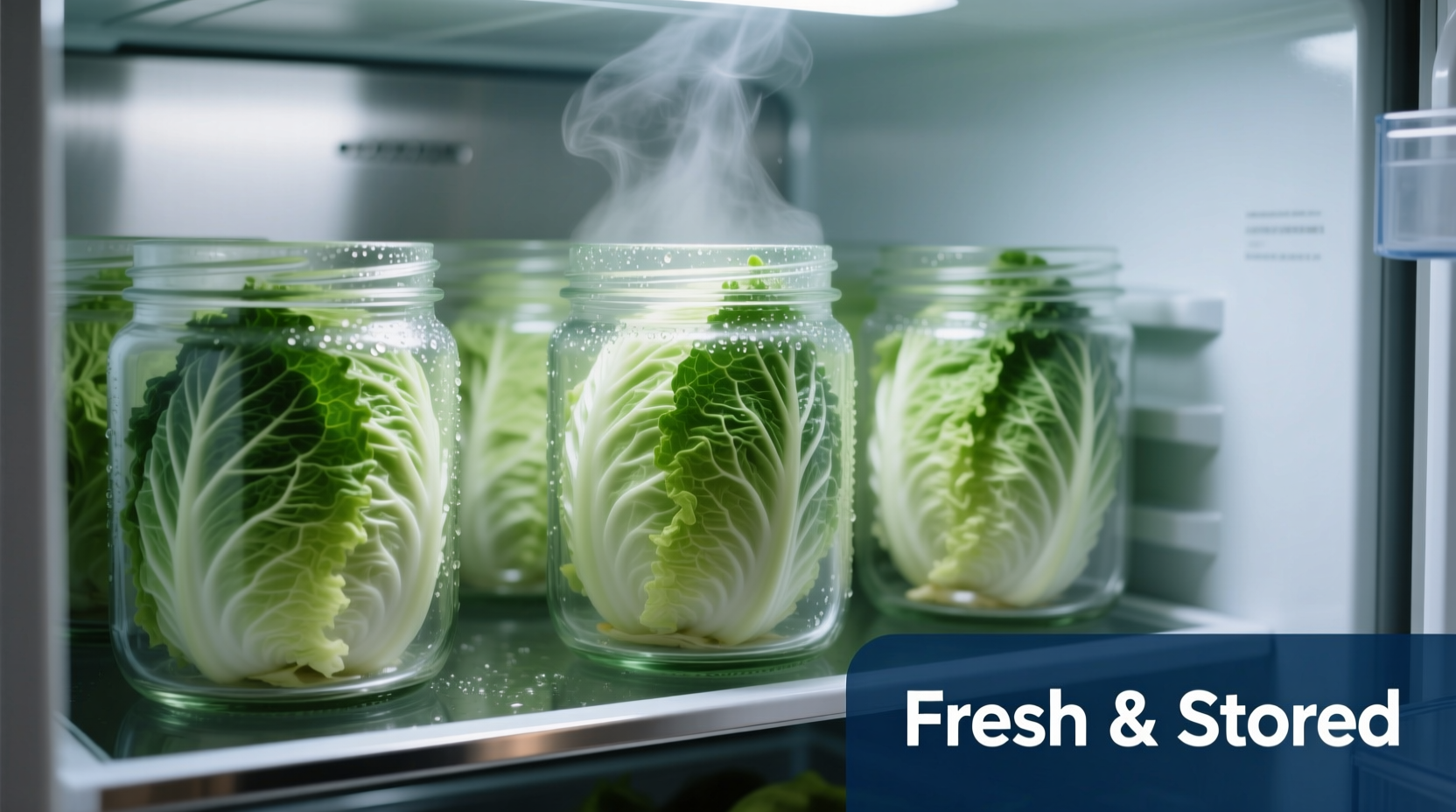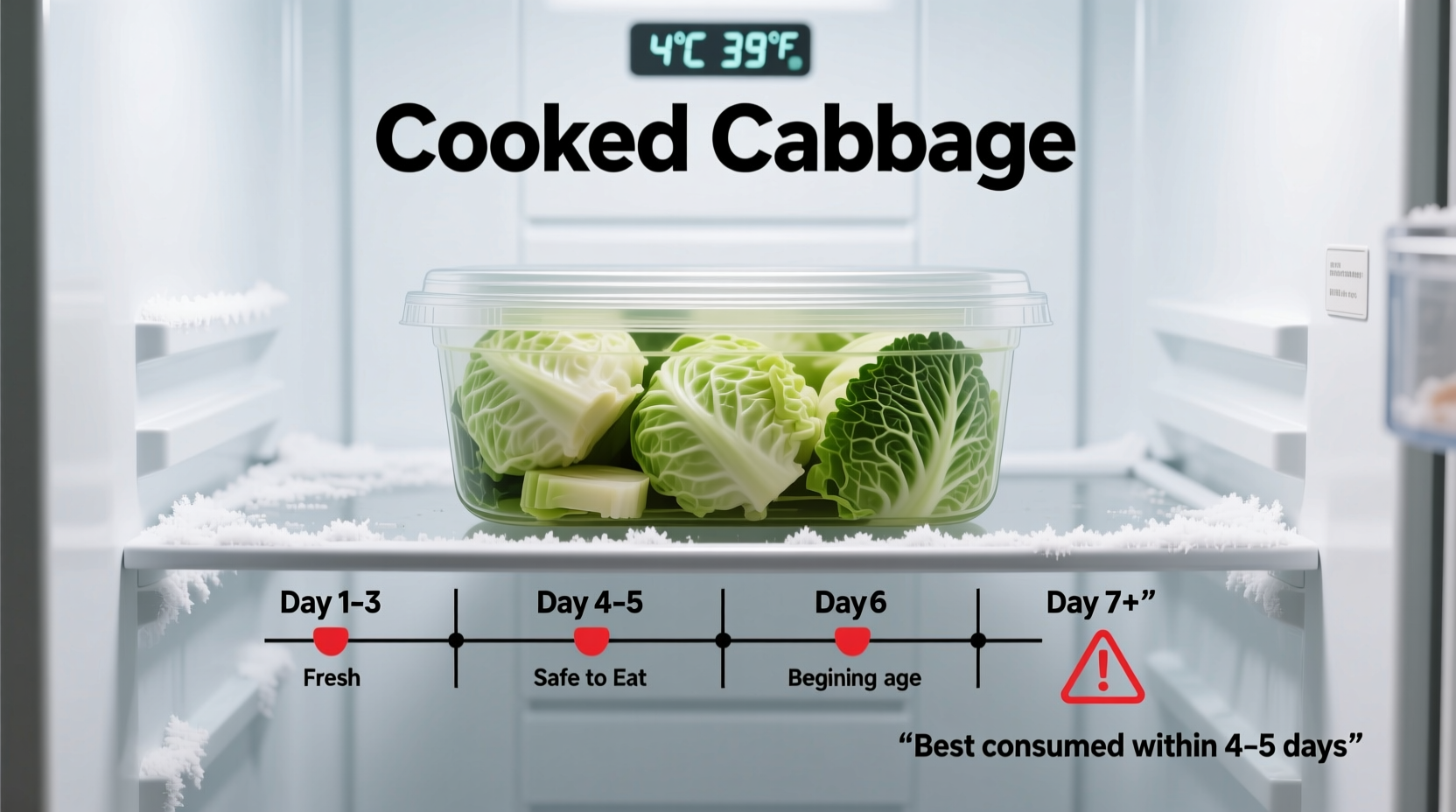Wondering if that leftover cabbage soup or roasted cabbage from last night's dinner is still safe to eat? You're not alone—food safety questions top the list for home cooks trying to balance reducing waste with avoiding foodborne illness. Getting this right matters because improperly stored cooked cabbage can harbor bacteria like Salmonella and Listeria, putting your health at risk.
The Science Behind Cabbage's Shelf Life
When cabbage cooks, its cellular structure breaks down, releasing moisture that creates an ideal environment for bacterial growth. According to the USDA Food Safety and Inspection Service, cooked vegetables enter the "Temperature Danger Zone" (40°F-140°F) where bacteria multiply rapidly. The key factors determining your cooked cabbage's lifespan include:
- Initial cooking temperature - Properly cooked cabbage (heated to 165°F) reduces initial bacteria load
- Cooling speed - Cabbage cooled within 2 hours after cooking maintains better quality
- Storage container - Airtight containers prevent moisture loss and contamination
- Refrigerator temperature - Consistent 40°F or below significantly extends freshness
| Storage Method | Refrigerator Shelf Life | Quality Notes |
|---|---|---|
| Open container | 1-2 days | Rapid moisture loss, strong odor absorption |
| Loose plastic wrap | 2-3 days | Moderate moisture retention |
| Airtight container | 3-5 days | Best texture and flavor retention |
| Freezer (properly packaged) | 10-12 months | Ideal for long-term storage |
Step-by-Step Storage Protocol for Maximum Freshness
Follow this professional kitchen-tested method to maximize your cooked cabbage's refrigerator life:
- Cool rapidly - Spread cooked cabbage in a thin layer on a baking sheet for 15-20 minutes
- Portion control - Divide into single-serving containers to avoid repeated temperature changes
- Seal properly - Use containers with tight-fitting lids, leaving ½ inch headspace for expansion
- Label clearly - Note cooking date with marker directly on container
- Store strategically - Place in main refrigerator compartment (not door) where temperature is most stable
Research from Clemson University's Cooperative Extension confirms that this method extends cooked cabbage's quality by up to 40% compared to haphazard storage approaches.

Spoilage Warning Signs You Must Recognize
Don't rely solely on dates—your senses provide critical safety information. Discard cooked cabbage immediately if you notice:
- Visual changes - Grayish discoloration, excessive liquid separation, or mold growth (even in small spots)
- Odor indicators - Sour, unpleasant, or "off" smells (fresh cooked cabbage has a mild, slightly sweet aroma)
- Texture issues - Slimy consistency or mushiness beyond normal cooked texture
- Taste test (last resort) - If other signs are ambiguous, a tiny taste will reveal sourness or bitterness
The FDA Food Code emphasizes that when in doubt, throw it out—especially for vulnerable populations like children, elderly, or immunocompromised individuals.
Extending Your Cooked Cabbage's Lifespan
Need more time before using your leftovers? These professional techniques can help:
Freezing for Long-Term Storage
For optimal results when freezing cooked cabbage:
- Blanch first if freezing plain cooked cabbage
- Portion into freezer bags with air removed
- Add acidic components (lemon juice/vinegar) to maintain color
- Label with contents and date
According to the National Center for Home Food Preservation, properly frozen cooked cabbage maintains quality for 10-12 months.
Strategic Reheating Methods
When using refrigerated cooked cabbage:
- Reheat only the portion you'll consume immediately
- Bring to 165°F internal temperature
- Add fresh seasonings to compensate for flavor loss
- Consider incorporating into soups or casseroles where texture changes are less noticeable
When Leftovers Become Risky: The Critical Timeline
Food safety experts from FoodSafety.gov recommend this decision timeline for cooked cabbage:
- Day 1-2 - Peak quality and safety; ideal for salads or side dishes
- Day 3 - Still safe but check carefully for spoilage signs; best reheated thoroughly
- Day 4 - Use only if passing all freshness tests; incorporate into cooked dishes
- Day 5+ - Discard regardless of appearance; risk outweighs potential waste
This timeline aligns with USDA FoodKeeper guidelines, which emphasize that "use by" dates for cooked vegetables shouldn't exceed 5 days under optimal conditions.











 浙公网安备
33010002000092号
浙公网安备
33010002000092号 浙B2-20120091-4
浙B2-20120091-4